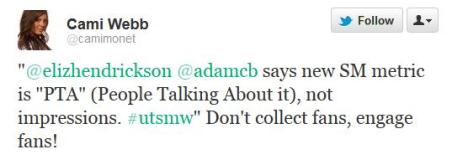One of the great benefits of social media is its ease of spreading awareness. But in order for the word to spread, someone has to see an opportunity and tell a story.
Caine is a 9-year-old boy who built an arcade made from cardboard boxes at his dad’s auto parts shop. His father’s shop was visited by many customers. Sadly, his ingenious idea went without recognition because they didn’t see the opportunity. But it took one man, a filmmaker, who was simply looking for a used auto part to notice a story in Caine’s Arcade.
The filmmaker, Caine’s only customer, purchased a fun pass (500 turns for $2) and was amazed by the kid’s creativity and enthusiasm during their interaction. So much so, he decided to plan a flash mob to get customers for Caine. His father, who didn’t believe Caine’s story would mean anything to anyone, also allowed the customer to shoot a short film about Caine.
The filmmaker created a Facebook event page asking people to show up and play at the arcade. News spread quickly. The local NBC affiliate made a visit to the Caine’s Arcade; people from around the world were leaving comments and sharing the event. It even landed on the front page of reddit. On the day of the event, Caine was surprised by a mob of people shouting “We want to play!”
The launch of the short film and Caine’s Arcade Scholarship Fund also went viral. According to Vimeo statistics, the film received 3.3 million plays, 11,200 likes and 637 comments. Caine’s Arcade Scholarship Fund asked page visitors to donate $1 or more to help Caine go to, and prepare for college. The cause has raised more than $200,000!
Everyone can relate to a story, because everyone has a story. Caine’s Arcade went viral because someone stopped and realized that there was an opportunity. It takes people like us, in the public relations and advertising world, to find good stories in the most unlikely places. Caine’s story connected with viewers, and as a result, many people took action. Be aware of your surroundings the next time you’re out and about.
There may be a story that you can tell.
Filed under: Uncategorized | Tagged: advertising, arcade, Caine's arcade, facebook, facebook event, filmmaking, NBC, nbc southern california, pradical, public relations, reddit, scholarship fund, social media, vimeo | 1 Comment »




















 The launch of
The launch of